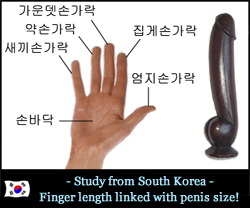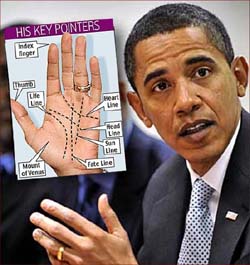The Extra Thumb in the Mole & the Giant Panda is not a real finger: it’s a Sesamoid Bone!
July 16, 2011

A mole has (only) 5 digits + a large sickle shaped sesamoid bone.
Vertebrates usually have five fingers on each hand, but in some specifies – including the Great Panda & the Mole – the hand ‘appears’ to be featured with an extra thumb (polydactly). Earlier this week paleontologists from the University of Zurich have uncovered a new theory about the underlying biological causes that are responsible for the mole’s extra thumb.
The researchers see a connection between the species-specific formation of the extra thumb in the mole and the peculiar “male” genital apparatus of female moles. In many mole species, the females have masculinized genitals and so-called “ovotestes,” i.e. gonads with testicular and ovary tissue instead of normal ovaries. Androgenic steroids are known to influence bone growth, transformation and changes, as well as the transformation of tendons in joints. A high level of maternal testosterone is also thought to be one of the causes of polydactyly in humans.
ABOUT SESAMOID BONES & EXTRA THUMBS!
Anatomically, what ‘appears’ to be extra thumb that is seen in the Mole and the Giant Panda can be described as the result of excessive growth of the so-called sesamoid bones which are typically found in all vertebrates at the end of the thumb metacarpal.
NOTICE: Sesamoid bones are found in locations where a tendon passes over a joint.
In the human hand sesamoid bones are rather small and they act to protect the tendon and to increase its mechanical effect – so they play a key role in the multi-functionality of the human hand, see the picture below.

– Sesamoid bones in the human hand –
However, in some other vertebrate species sesamoid bones have a more explicite function for it’s owner.
E.g. in the mole’s paw the extra thumb is shaped by a sesamoid bone manifesting as a sickle shape which gives the mole a bigger surface for digging.
And in the Giant Panda’s paw the extra thumb is actually shaped by a radial sesamoid larger than the same bone in counterparts such as bears. It is primarily a bony support for the pad above it, allowing the panda’s other digits to grasp bamboo while eating it.

The Giant Panda has 5 digits + a large sesamoid bone.
NOT A REAL FINGER!
These considerations implicate that Moles and Giant Pandas do not really have an extra finger. This is confirmed by the fact that their ‘appearance’ of an extra finger is not featured with other typical characteristics seen in the other fingers – e.g. a nail (claw) & phalanges are missing, and embryology studies have revealed that the extraordinary sesamoid bone in both the Mole and the Panda starts developming at a much later stage compared to the 5 digits that are typically seen in every vertebrate!
MORE ABOUT THE HANDS IN VERTEBRATES:
• The mystery of the five fingers
 Finger length & penis size linked!
Finger length & penis size linked! The hands of Barack Obama
The hands of Barack Obama Megan Fox thumbs – TRIBUTE
Megan Fox thumbs – TRIBUTE Hrithik Roshan thumbs – TRIBUTE
Hrithik Roshan thumbs – TRIBUTE Hand Reading Research!
Hand Reading Research! MultiPerspective Palm Reading
MultiPerspective Palm Reading